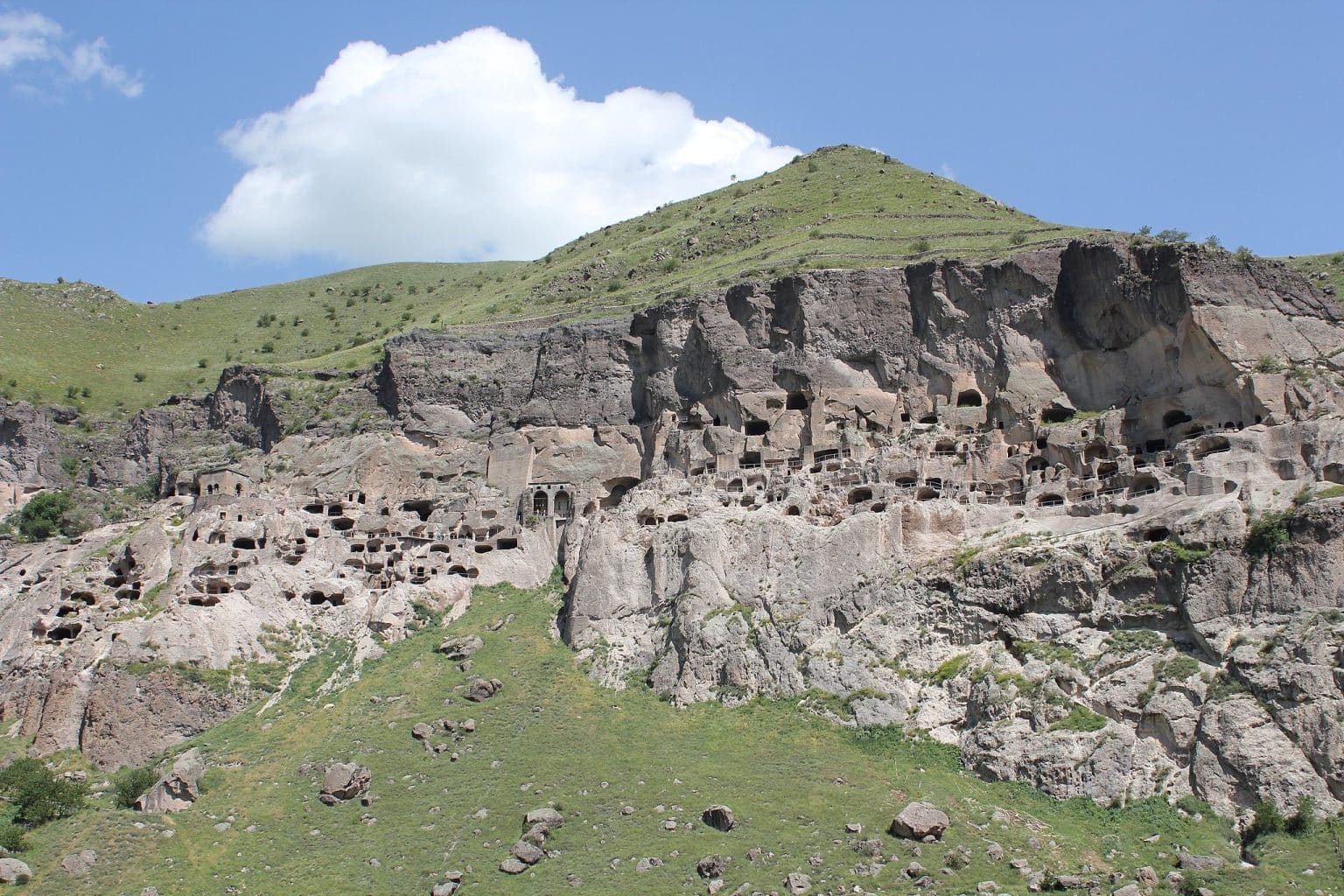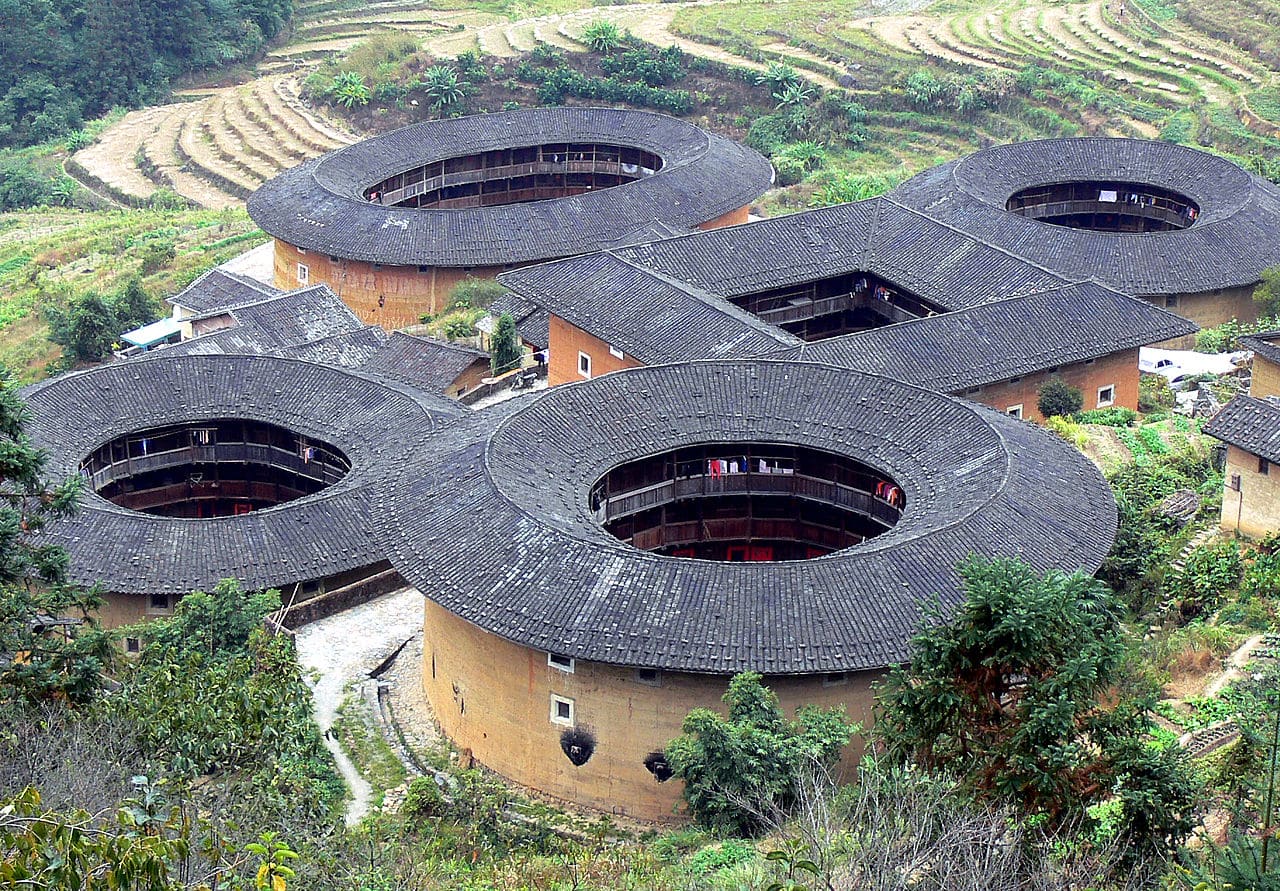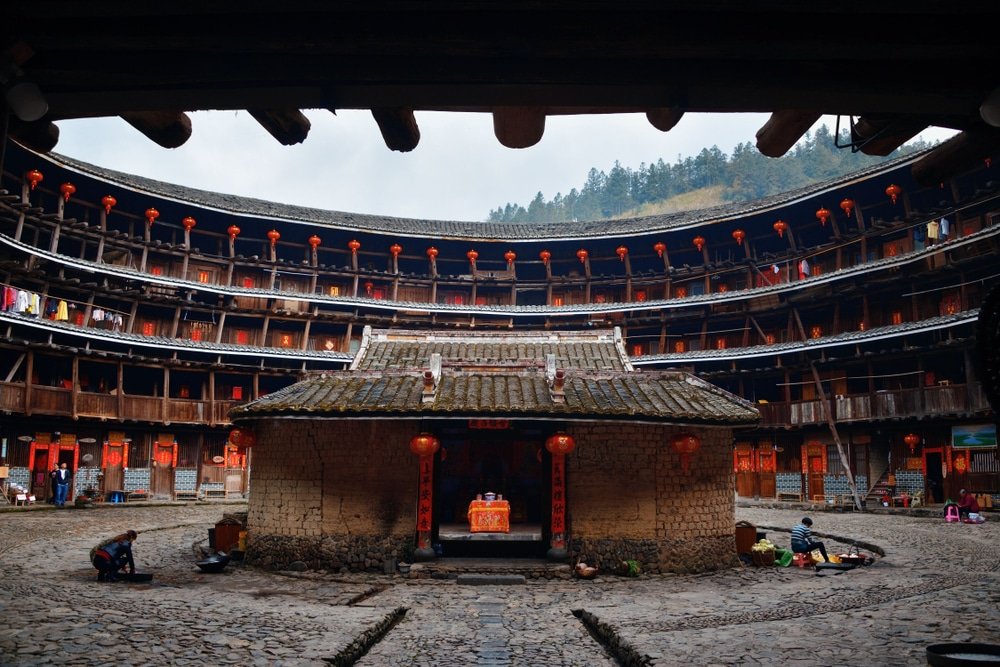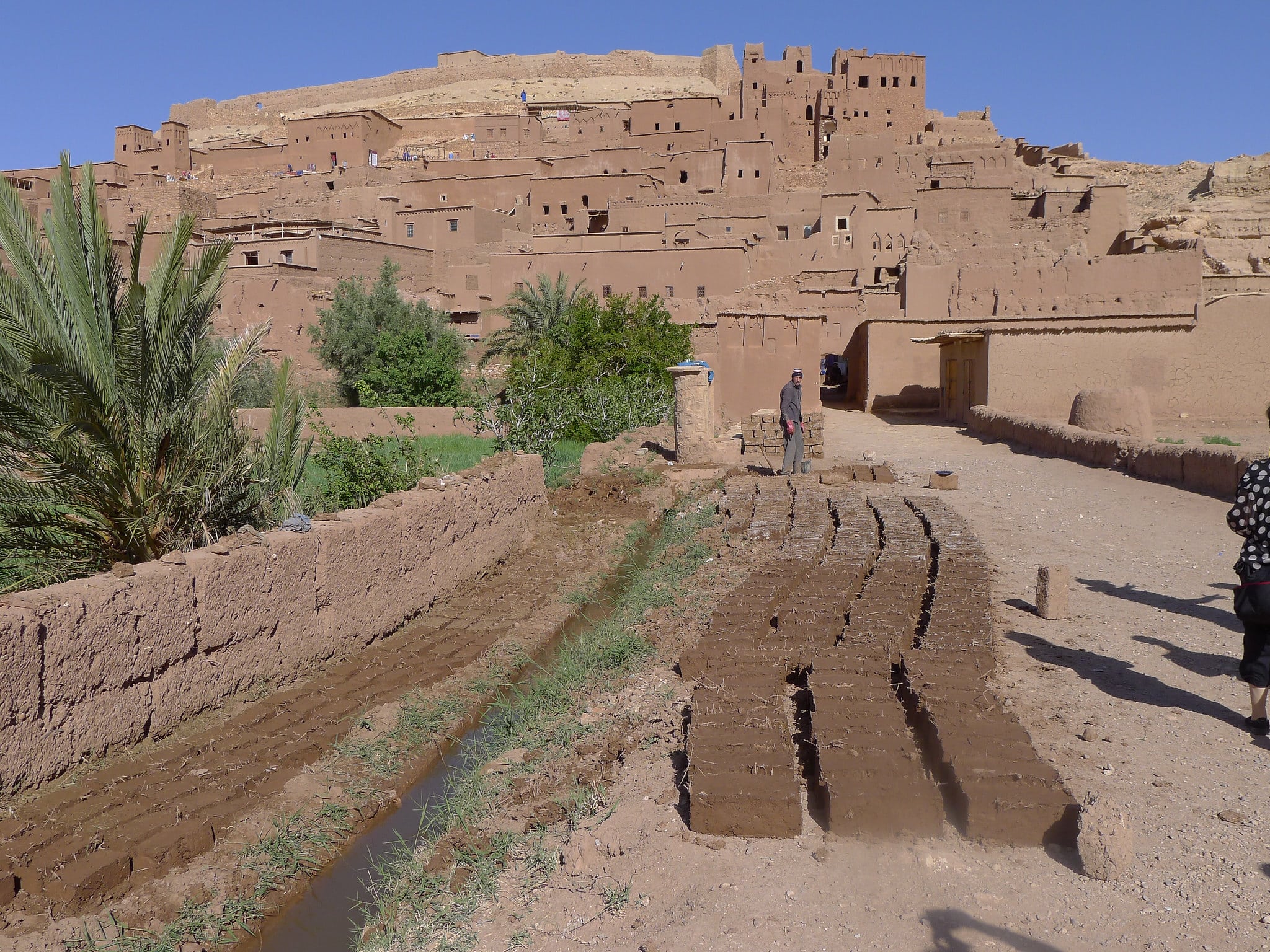The traditional methods of avoiding heat of the ancients
On hot days, we just want to be in a cool air-conditioned room. But in the time when there was no air conditioner, how did people deal with the heat? Here are the traditional methods of keeping cool both indoors and outdoors without electricity.
Real estate
From primitive caves to medieval castles, humans have used earth and rock to build their shelters of safety and coolness. Around the world, people have unearthed many underground structures that have existed for millennia, such as: Anasazi houses on the cliffs of Mesa Verde, Colorado, USA; the cliff villages of Bandiagara in Mali; or Vardzia cave monastery built in the 12th century in rural Georgia.

Vardzia is a cave monastery complex in southern Georgia, excavated at the slopes of Mount Erusheti on the left bank of the Kura River.
China's Fujian province boasts 46 earthen 'tulou's that have been designated a UNESCO world cultural heritage site and are described as 'an outstanding example of traditional housing . [in relation] in harmony with the surrounding environment'. The Fujian tulou has a unique architecture with massive walls built from soil mixed with stone, bamboo or wood. to help keep winter warm, summer cool and resist natural disasters.

The Fujian tulou was built from earth, stone and wood.

Unburnt brick houses built by the Pueblo people are popular and suitable for the dry climate of the American Southwest. Unburnt bricks are made from clay, sand, organic matter and water and then dried in the sun. Using this type of brick to build a house helps the house to be sustainable, well-insulated and resistant to water.

The unburnt brick construction helps to beat the summer heat.

The unburnt brick construction helps to beat the summer heat.
The high heat retention of bricks and stones allows them to absorb and store the sun's heat during the day. The stored heat will be released when the ambient temperature drops. Thick walls or double walls with insulation in between are key to keeping the heat out.
Ancient Chinese coolers
The fan is considered a Chinese invention. But not only hand-held fans, mechanical rotating fans were also invented as early as the Han Dynasty (206 BC - 220 AD). They are manually operated to create a cool atmosphere, mainly for royalty. Gradually developed, by the Tang Dynasty (618-907), the royal family built a 'cool room' next to a stream, where the continuous flow of water made the fan rotate and blow cool wind; or water is transported mechanically to the roof, where it will drip down, cooling the incoming air with the wind.

The earliest invented cooling fan in China
The porcelain pillow may sound uncomfortable, but it actually ensures a good night's sleep. The ancient Chinese believed that soft pillows were not very good because they drain the body's energy and do not ward off evil spirits.
Plain porcelain pillows appeared in the Sui Dynasty (581-618). Porcelain pillow designs became more and more popular and became popular during the Song Dynasty (960-1279), many of the beautiful pillows found today are from this period.

Tang Dynasty porcelain pillow at Xinxiang City Museum, Henan Province.
Habits to help dispel the heat
There are many traditional methods applied by the ancients in daily life to cope with the heat such as: soaking bed sheets in water before sleeping, covering windows with wet towels to help prevent sunlight from entering the house, wearing hats wet or wrap a damp towel around your neck to help keep you cool.
Siestas, or midday naps, are common in warm climates like the Mediterranean and Latin America. The body expends a lot of energy just to stay cool, so resting during the hottest part of the day will help your body rest and regain its energy.

'Siesta' by Frank Duveneck, 1886
In addition, we should plant deciduous trees around the house to provide shade in the summer without blocking the sun in the winter. Some plants can grow extremely quickly, so don't think it's too late for this greening method.

It's never too late to plant trees for shade.
Skin
In the desert, people often wear clothing that covers from head to toe, which not only helps to avoid the heat, but also has another important benefit. Wearing long, loose clothing – preferably white – helps slow the evaporation of sweat, thus helping the body maintain its cooling mechanism.
Cooling food
There are some foods that can rehydrate and have a natural cooling effect that is very good for the body on hot days.
According to Chinese medicine, seasonal and tropical fruits such as melons, strawberries, kiwis, bananas and avocados; vegetables such as greens, cucumbers, celery and broccoli; and proteins like fish, tofu, green beans and pork are helpful to maintain balance and cool down the body.
Refreshing teas can be twice as delicious when mixed with cooling herbs like cumin or mint. Lemon water and other citrus drinks are not only refreshing but also help to remove toxins from the body. Coconut water is a sweet way to replenish nutrients.

You may have noticed that people from hot climates tend to like spicy foods. There is a good reason behind this.
Spicy spices have antibacterial properties and can act as a preservative. Since the cuisines of different cultures evolved long before refrigerators were available, people living in hotter regions have become accustomed to eating spicy foods to minimize bacteria and viruses.
Furthermore, spicy foods cause perspiration – especially in the face – thereby creating an overall cooling effect on the body. Chilled foods have the opposite effect and cause the body to work to restore warmth.
- Cure burns by traditional methods
- The most effective way to fight against roofs
- Strange customs for the dead
- Avoid the heat of the African lion style
- Can traditional medicine and traditional medicine cure cancer?
- 4 simple ways to reduce heat in the hot season
- Ancient Chinese summer dresses: More clothes that the ancients bravely wore than their descendants today
- By super-fast laser, glass can be welded to aluminum, steel or titanium!
- Discover the unique sundials of the ancients
- Plums cure sore throat
- Combining two traditional methods, scientists can defeat cancer
- Danger when temperatures rise
 Biography of hero Vu A Dinh
Biography of hero Vu A Dinh History of hematology
History of hematology Who is Mr. Tam Da 'Phuc-Loc-Tho' and what does it mean?
Who is Mr. Tam Da 'Phuc-Loc-Tho' and what does it mean? Unbelievable facts about the history of the oil and gas industry: Gasoline used to be cheaper than water, so abundant that it had to be dumped into the river...
Unbelievable facts about the history of the oil and gas industry: Gasoline used to be cheaper than water, so abundant that it had to be dumped into the river...